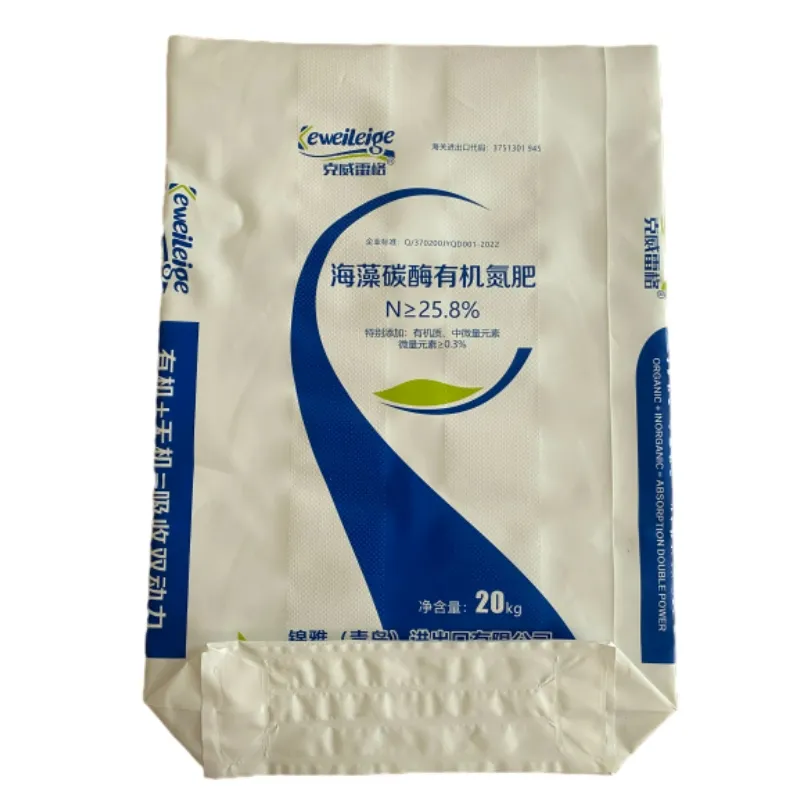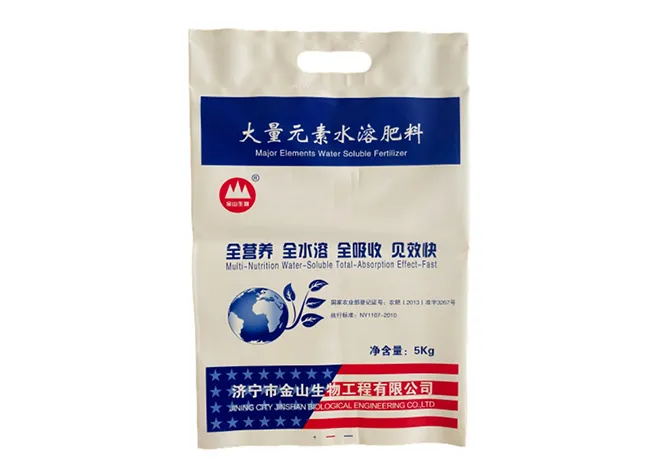Rice packaging bags are not merely containers; they signify a crucial element in preserving the quality, freshness, and integrity of rice. Understanding the different types of rice packaging bags available today is essential for producers, suppliers, and consumers seeking optimal solutions for storage and transportation.

Rice packaging bags come in various materials, each serving a specific purpose and offering distinct advantages. Traditionally, jute bags were the primary choice due to their durability and breathability. However, with advancements in technology and changes in market demands, manufacturers have diversified the materials used to create rice packaging bags, significantly enhancing their functionality.
1. Polypropylene (PP) Woven Bags These are perhaps the most commonly used rice packaging bags today, revered for their strength and durability. Polypropylene is a type of thermoplastic polymer, making these bags resistant to moisture and adaptable to various climatic conditions. They protect rice from external elements and are lightweight, which reduces shipping costs. The weave technology used in these bags also provides breathability, crucial for keeping rice fresh during transport and storage.

2. BOPP Bags (Biaxially Oriented Polypropylene Bags) A step ahead from standard polypropylene bags, BOPP bags offer a high level of print quality, making them ideal for brands looking to showcase vivid graphics and strong visual marketing. These bags combine resilience with aesthetics, without compromising on quality. BOPP bags are also known for their high tear resistance, ensuring that rice reaches consumers without damage.
3. Plastic Laminated Bags While plastic is often criticized for environmental reasons, plastic laminated bags remain popular due to their ability to offer airtight sealing properties. These bags are essential for preserving rice's natural aroma and taste by providing excellent protection against moisture and pests. Improved sealing capabilities make these bags a good choice for long-term storage.
4. Jute Bags Still in use today, jute bags are favored for their eco-friendly properties. They are biodegradable and have a rough texture, which prevents bags from slipping when stacked. Jute bags allow for the exchange of air, preventing mold growth in humid climates. Their traditional appeal also adds a rustic charm favored by brands wanting to project sustainability and eco-consciousness.
types of rice packaging bags
5. Cotton Bags Offering a perfect blend of durability and breathability, cotton bags are used by certain brands as an eco-friendly alternative to plastic. While not as popular for mass packaging, they are often used for premium rice varieties, enhancing the product's perceived value. Cotton bags are reusable, which appeals to environmentally aware consumers.
6. Vacuum Packaging Bags These are specialized bags often used for premium rice varieties where it's crucial to maintain freshness and extend shelf life. Vacuum bags remove all air before sealing, halting bacterial growth and oxidation, which can degrade rice quality over time. While more expensive, these bags increase rice longevity, making them favorable for special occasions and high-end markets.
Each type of bag offers unique benefits but choosing the right one depends on factors like transportation distance, storage conditions, brand identity, and environmental impact. Beyond functionality, marketing considerations like bag aesthetics and print quality also play a significant role in bag selection.
Environmental concerns have also prompted the industry to innovate, developing biodegradable and recyclable packaging solutions. As consumer awareness grows, many producers are now seeking sustainable options that do not sacrifice quality or increase costs.
Trust in packaging is built on consistency and transparency. Producers must work with reputable suppliers who can ensure that the bags meet regulatory standards for safety and quality. Expertise in understanding the interplay between rice types and bag materials can help ensure that producers make informed decisions, leading to enhanced product reputation and customer satisfaction.
In conclusion, while rice packaging bags might seem like a minor detail, they hold significant power in the rice supply chain. A careful selection can lead to operational efficiencies, elevated brand perception, and happier customers. With growing awareness around environmental impacts, the industry is poised to see further innovations that balance practicality with sustainability.